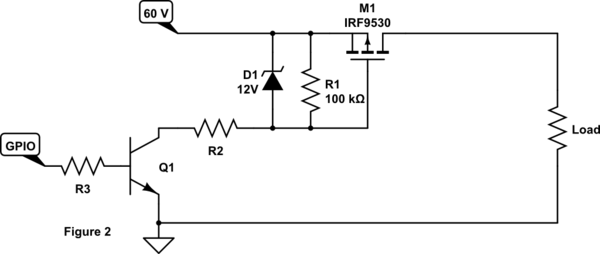I've decided to simplify my previous "solid-state switch" that has to switch 5A @ 60V.
Instead of using an N-channel MOSFET plus a gate driver (which has to have a charge pump in order to have 100% duty cycle, I learned the hard way,) I plan on using a P-channel MOSFET directly driven by a GPIO.
I'm unsure about the way to treat that since the GPIO is 12V tolerant but the P-channel switches 60V.
The GPIO when high brings its output to the ground and stays floating when low. I've added the 100K pull-up resistor to be sure the FET stays off when not driven but does that compromise the GPIO by also pulling it to 60V?
Having that in mind, I copied another schematic and added a 12V Zener in order to clamp that voltage but at the same time, won't that defeat the purpose of the pull-up resistor since Vgs will always be <0 in that case??

simulate this circuit – Schematic created using CircuitLab




